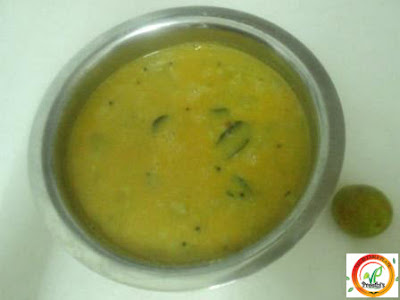Mint leaves are a very aromatic herb which has found a permanent place in most of the Indian kitchen. The fresh greeny leaves are a feast to the eyes, nose and our taste buds. The mint leaves have enormous health benefits. This herb is mostly used in most of the biryani preparation to bring out a rich flavor for the biryani rice. This healthy leaf can be prepared in numerous ways. Mint leaves can be prepared as chutney, thovayal, fresh juice, mixed rice, pulav, tea & topping ingredient for biryani’s etc.
Health Benefits of Mint Leaves:
1. Mint leaves have extensive use in aromatherapy due to its therapeutic properties.
2. Eliminates bad breadth.
3. Mint is a good cleanser for the blood.
4. Regular consumption of herbal Mint tea aids in weight loss.
5. Mint is a strong diuretic, thus eliminates the toxins from our body.
6. Mint reduces growth of fungus and bacteria in the body on regular usage.
Here is an easy and quick method to prepare very tasty and flavorful mint pulav. This pulav can be simply served with any raita or papad or any side dish of your choice.
Ingredients:
Mint leaves – 2 cups (leaves plucked and cleaned)
Onion – 1, slit into big slices
Ginger-garlic paste – 1 tsp
Green chillies – 4 or 5
Salt – 2 tsp
Rice – 2 Cups (washed and drained)
Water – 3 to 3 ½ cups max
Seasoning ingredients: Oil – 4 tbsp, cloves – 2, cinnamon stick – 2, cardamom – 2, Mixed nuts (almond, pistachio, cashews) – 2 tbsp (broken into small pieces)
Method:
1. Grind washed and cleaned mint leaves and green chillies together, adding very little water into a thick mint paste.
2. In a pressure cooker, add the seasoning ingredients and stir till the nuts turn light brown and the spices emancipate nice aroma.
3. Add ginger-garlic paste and fry well.
4. Add onions and sauté will translucent.
5. Add the mint paste and mix well and let it cook for 2 minutes.
6. Add the washed rice and stir fry the rice along with the mint paste and other ingredients. Add required salt now.
7. Add the water and mix everything well. Close the cooker and lower the flame to the minimum, add the weight and pressure cook for about 10-12 minutes & switch off. Let the pressure drop on its own completely and then open the cooker and mix the rice just few times.
A Very flavorful mint pulav is ready to serve.
Health Benefits of Mint Leaves:
1. Mint leaves have extensive use in aromatherapy due to its therapeutic properties.
2. Eliminates bad breadth.
3. Mint is a good cleanser for the blood.
4. Regular consumption of herbal Mint tea aids in weight loss.
5. Mint is a strong diuretic, thus eliminates the toxins from our body.
6. Mint reduces growth of fungus and bacteria in the body on regular usage.
Here is an easy and quick method to prepare very tasty and flavorful mint pulav. This pulav can be simply served with any raita or papad or any side dish of your choice.
Ingredients:
Mint leaves – 2 cups (leaves plucked and cleaned)
Onion – 1, slit into big slices
Ginger-garlic paste – 1 tsp
Green chillies – 4 or 5
Salt – 2 tsp
Rice – 2 Cups (washed and drained)
Water – 3 to 3 ½ cups max
Seasoning ingredients: Oil – 4 tbsp, cloves – 2, cinnamon stick – 2, cardamom – 2, Mixed nuts (almond, pistachio, cashews) – 2 tbsp (broken into small pieces)
Method:
1. Grind washed and cleaned mint leaves and green chillies together, adding very little water into a thick mint paste.
2. In a pressure cooker, add the seasoning ingredients and stir till the nuts turn light brown and the spices emancipate nice aroma.
3. Add ginger-garlic paste and fry well.
4. Add onions and sauté will translucent.
5. Add the mint paste and mix well and let it cook for 2 minutes.
6. Add the washed rice and stir fry the rice along with the mint paste and other ingredients. Add required salt now.
7. Add the water and mix everything well. Close the cooker and lower the flame to the minimum, add the weight and pressure cook for about 10-12 minutes & switch off. Let the pressure drop on its own completely and then open the cooker and mix the rice just few times.
A Very flavorful mint pulav is ready to serve.


















































